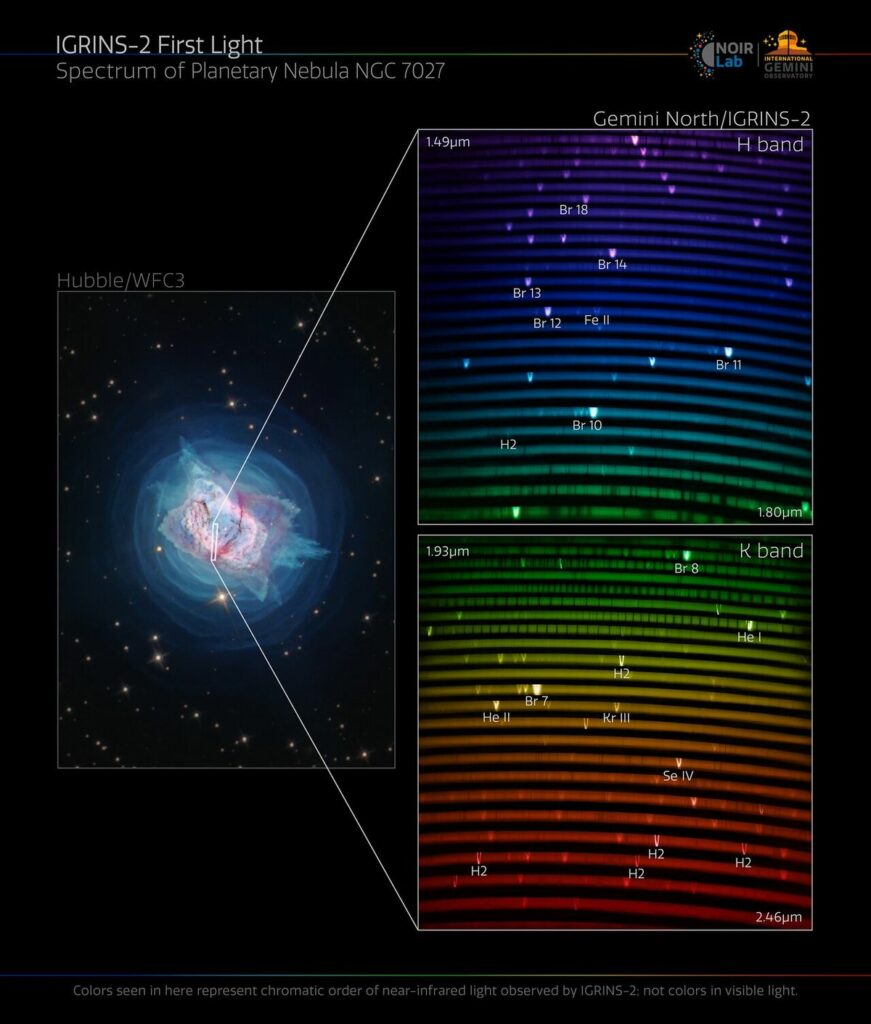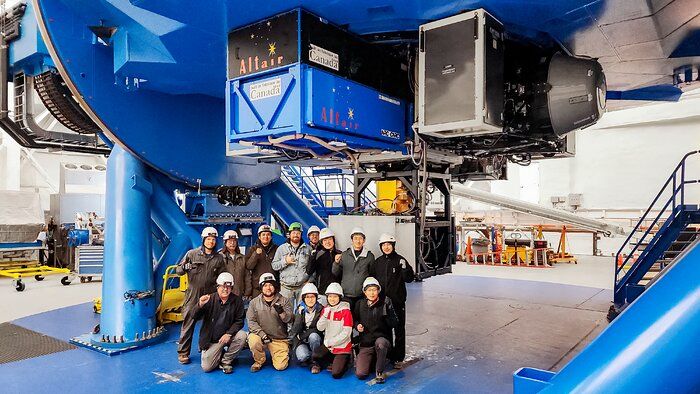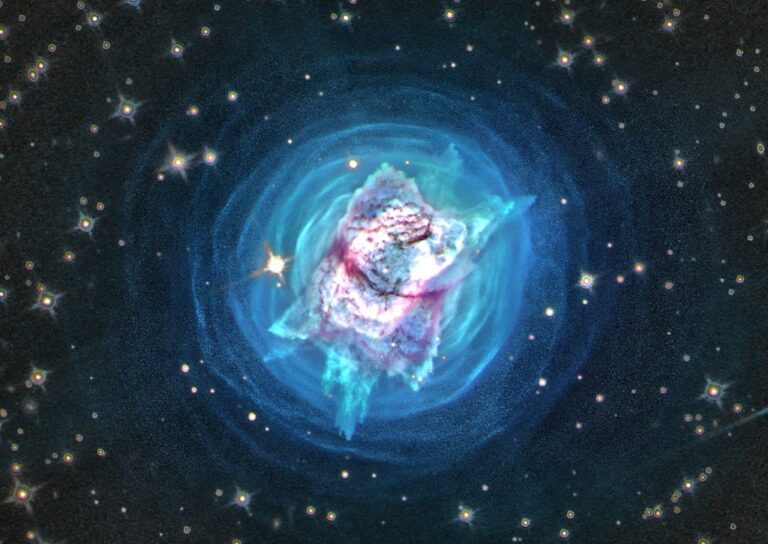Astronomers Investigate the Inner Workings of a Dying Star by Penetrating the Cosmic Dust of the ‘Jewel Bug Nebula’.
The inaugural observations of a recently installed spectrograph on the Gemini North telescope have captured the first light, revealing the elemental composition of a dying star identified as the Jewel Bug Nebula.
Astronomers at the Gemini North Telescope on Mauna Kea in Hawaii have unveiled the inaugural spectrum captured by a cutting-edge spectrograph. This advanced instrument has the capability to delve into the layers of cosmic dust that permeate our universe.
The revealed spectrum provides intricate details of a dissipating cloud of gas and dust expelled by a sun-like star in the final stages of its existence. Referred to as a planetary nebula, despite having no association with planets, this particular nebula is formally designated as NGC 7027, also known as the Jewel Bug Nebula. It resides approximately 3,000 light years away in the Cygnus constellation, resembling a swan.
The newly employed spectrograph, named IGRINS-2 (Immersion Grating Infrared Spectrograph-2), operates at high resolution within the near-infrared wavelengths of light, specifically spanning 1.45 to 2.45 microns. Unlike visible wavelengths that are obstructed by cosmic dust, near-infrared light has the ability to penetrate through this dust, allowing the detection of concealed phenomena. This characteristic aligns with the capability of the James Webb Space Telescope, renowned for its proficiency in peering through deep space dust barriers, making it the most potent near-infrared wavelength detector currently available.
Regarding the “immersion grating” aspect, it pertains to a type of diffraction grating employing transparent and reflective materials to disperse light into its individual wavelengths. This is precisely how IGRINS-2 harnessed infrared wavelengths, successfully producing the vivid and intricate spectrum observed.

IGRINS-2 represents an upgraded iteration of the original IGRINS spectrograph, which was constructed in 2014 by researchers from the Korea Astronomy and Space Science Institute (KASI) and the University of Texas.
The initial version, IGRINS 1.0, has undergone various phases, serving as a “visiting instrument” on multiple telescopes such as the 2.7-meter (8.9 feet) Harlan J. Smith Telescope at McDonald Observatory in Texas and the 4.3-meter (14.1 feet) Discovery Channel Telescope at Lowell Observatory in Arizona. Since 2020, IGRINS has been in residence on the 8.1-meter (26.6 feet) Gemini South Telescope in Chile.
In the latest development, the counterpart of NOIRLab’s International Gemini Observatory, Gemini North, is now home to IGRINS-2 on a permanent basis.

Once again crafted by scientists and technicians at KASI, the initial spectrum capturing the first light of the Jewel Bug Nebula marks just the commencement. After a phase of integrating the instrument into the sub-systems of Gemini North and aligning it with the telescope’s software, IGRINS-2 will focus predominantly on areas of stellar birth and demise, exemplified by NGC 7027, as well as explore exoplanets, cool brown dwarfs emitting mainly in the infrared, and distant galaxies veiled in dust during some of the more tumultuous phases of their evolutionary processes.

“The capacity of IGRINS-2 to penetrate otherwise obscured regions of the universe will enhance our comprehension of the birth of stars and numerous other astronomical phenomena concealed by galactic dust,” remarked Martin Still, the National Science Foundation’s Program Director for the International Gemini Observatory, in a statement.
In NGC 7027, IGRINS-2 has discerned elements such as isotopes of bromine, helium, iron, krypton, and selenium, alongside abundant amounts of molecular hydrogen. Leveraging the formidable light-gathering prowess of Gemini North’s 8.1-meter mirror, IGRINS-2 is poised to conduct even more intricate observations, potentially leading to significant discoveries in the future.
This article is republished from SpaceCom under a Creative Commons license. Read the original article.
Do not forget to share your opinion with us to provide you with the best posts !




0 Comments